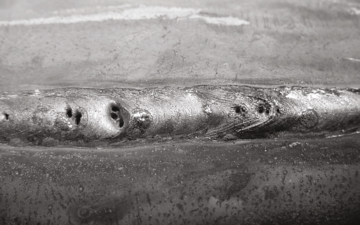Discover What is Porosity in Welding and Its Effect on Architectural Stability
Discover What is Porosity in Welding and Its Effect on Architectural Stability
Blog Article
Understanding Porosity in Welding: Exploring Causes, Effects, and Prevention Strategies
As specialists in the welding market are well mindful, recognizing the reasons, impacts, and avoidance methods connected to porosity is crucial for accomplishing robust and reliable welds. By diving into the origin causes of porosity, examining its damaging effects on weld high quality, and exploring effective avoidance approaches, welders can improve their understanding and skills to create top quality welds consistently.
Common Sources Of Porosity
Porosity in welding is mostly brought on by a combination of factors such as contamination, inappropriate protecting, and inadequate gas insurance coverage during the welding procedure. Contamination, in the form of dust, grease, or corrosion on the welding surface, creates gas pockets when heated, causing porosity in the weld. Improper shielding takes place when the protecting gas, commonly utilized in processes like MIG and TIG welding, is incapable to completely protect the molten weld swimming pool from responding with the surrounding air, leading to gas entrapment and succeeding porosity. Additionally, poor gas protection, typically as a result of wrong circulation rates or nozzle positioning, can leave parts of the weld unguarded, enabling porosity to develop. These variables collectively add to the formation of gaps within the weld, compromising its stability and possibly triggering architectural problems. Understanding and resolving these typical reasons are vital steps in stopping porosity and making certain the quality and toughness of welded joints.
Effects on Weld Top Quality
The visibility of porosity in a weld can dramatically endanger the general top quality and integrity of the welded joint. Porosity within a weld produces gaps or cavities that compromise the structure, making it a lot more susceptible to splitting, deterioration, and mechanical failing.
Additionally, porosity can prevent the efficiency of non-destructive testing (NDT) methods, making it challenging to detect various other flaws or stoppages within the weld. This can result in substantial safety issues, especially in essential applications where the architectural stability of the bonded components is critical.

Prevention Techniques Introduction
Given the harmful effect of porosity on weld high quality, effective prevention methods are crucial to maintaining the structural stability of bonded joints. One of the key avoidance techniques is extensive cleaning of the base products prior to welding. Pollutants such as oil, oil, corrosion, and dampness can contribute to porosity, so making sure a clean job surface is important. Appropriate storage of welding consumables in dry conditions is additionally crucial to avoid moisture absorption, which can bring about gas entrapment during welding. Additionally, picking the suitable welding criteria, such as voltage, current, and travel rate, can aid lessen the danger of porosity development. Making certain sufficient shielding gas circulation and insurance coverage is one more vital prevention technique, as inadequate gas insurance coverage can cause atmospheric contamination and porosity. Correct welder training and certification are essential for implementing preventative actions successfully and regularly. By including these avoidance strategies into welding methods, the incident of porosity can be considerably reduced, bring about stronger and extra reliable bonded joints.
Importance of Proper Shielding
Appropriate shielding in welding plays an important duty in preventing climatic contamination and guaranteeing the honesty of bonded joints. Shielding gases, such as argon, helium, or a combination of both, are frequently made use of to shield the weld pool from reacting with components in the air like oxygen and nitrogen. When important link these responsive elements enter contact with the warm weld swimming pool, they can create porosity, bring about weak welds with lowered mechanical buildings.

Insufficient protecting can result in numerous issues like porosity, spatter, and oxidation, jeopardizing the structural stability of the welded joint. For that reason, sticking to appropriate protecting practices is crucial to generate premium welds with marginal problems and look at here make certain the long life and dependability of the welded elements (What is Porosity).
Tracking and Control Techniques
Just how can welders effectively keep an eye on and regulate the welding process to ensure ideal outcomes and protect against problems like porosity? One secret approach is with the usage of advanced surveillance technologies. These can include real-time monitoring systems that give responses on parameters such as voltage, present, travel rate, and gas circulation prices. By continuously checking these variables, welders can recognize inconsistencies from the optimal problems and make instant adjustments to stop porosity formation.

Additionally, implementing proper training programs for welders is necessary for keeping an eye on and controlling the welding process properly. What is Porosity. Informing welders on the relevance of keeping constant parameters, such as proper gas protecting and travel rate, can assist stop porosity concerns. Routine evaluations and accreditations can additionally guarantee that welders excel in monitoring and managing welding procedures
In addition, using automated welding systems can improve monitoring and control capacities. These systems can specifically regulate welding parameters, reducing the possibility of human mistake and making sure regular weld top quality. By combining sophisticated monitoring modern technologies, training programs, and automated systems, welders can efficiently monitor and regulate the welding procedure to decrease porosity problems and attain premium welds.
Conclusion

Report this page